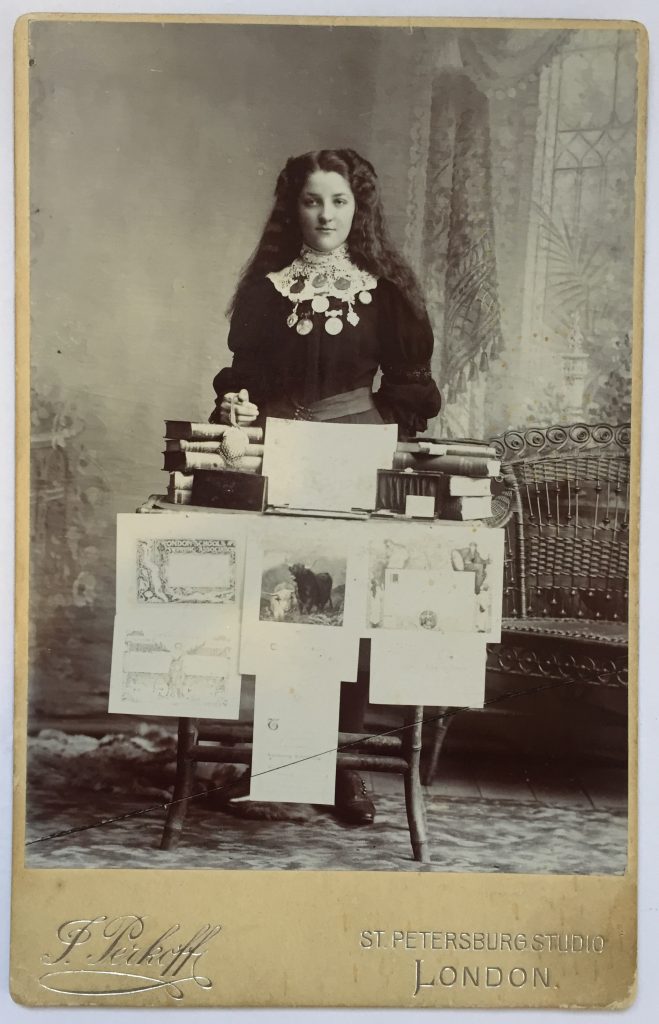
Untitled photograph, by Unknown, 1895. J Perkoff, St. Pertersburgh Studio London. Currently held by the British Schools Museum.
In the Victorian period boys were more important than girls, were taught different lessons, and so achieved more. Or did they?
Before camera phones, Instagram, and Snapchat, having your photograph taken was a big deal. You would have visited a professional photographer’s studio, worn your best clothes, and stood completely still for the long minutes it took for a photograph to be taken in the 1800s. Photographs were very expensive to have taken and so you would only have had one done for a special occasion such as a marriage, christening, or to celebrate an achievement.
This photograph shows a smartly dressed girl standing proudly with her many certificates of achievement and reward medals. She would have received these at school in recognition of hard work in different lessons. Medals were also given out in return for high attendance. Many girls in the Victorian period would have only gone to school for a couple of years, so teachers would have been very strict about attendance to make sure you learnt as much as possible in the time you had at school.
We are told that during the Victorian period girls were less important than boys and didn’t achieve much at school, mainly learning sewing and skills to help them run a home. However, this picture shows that girls could achieve, and achieve a lot! The books on the table indicate that these are not just rewards for needlework but also for reading, writing, and possibly other lessons like geography.
I think this photograph is really important because it challenges the old assumption that boys and girls were treated very different at school during the Victorian period. This picture indicates that they were both rewarded in the same way, and we know from written records that boys and girls were both punished for bad behaviour.
Looking again at objects and images from the past we can challenge assumptions and make our own informed opinions.
-Emily Shepperson
Acting Curator
British Schools Museum
Special thanks to the British Schools Museum for permission to utilize this object from their collection. For more about their awesome collections, visit them online here.
This post is part of our 52 Objects in the History of Girlhood exhibition. Each week during 2017, we explore a historical object and its relation to girls’ history. Stay tuned to discover the incredible history of girls, and be sure to visit the complete exhibition to discover the integral role girls have played since the dawn of time..
